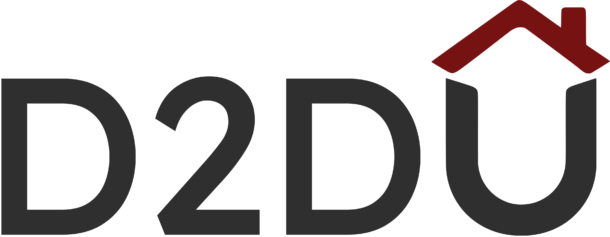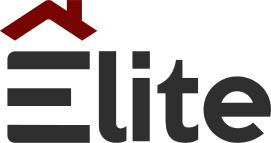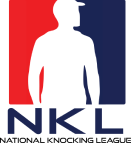Solar energy is no longer the future—it’s the now. With the U.S. solar market projected to reach $103.96 billion by 2032, more homeowners are switching to solar than ever.
But selling solar is no walk in the park.
Convincing prospects to choose the solar path takes a unique blend of knowledge, skills, and grit.
The ability to sell value over price can be the biggest difference between average reps and top closers.
“If you can get a customer to see the long-term benefits instead of just the upfront cost, price becomes a non-issue.”
For solar sales reps, business owners, and newcomers stepping into the industry, selling solar effectively is the key to standing out in this competitive space. The difference between average reps and top closers comes down to selling value over price.
This guide breaks down six must-know solar sales strategies to help you win more business, increase your commissions, and establish yourself as a top performer in the industry.
1. Know Your Product and Audience Inside Out
If you can’t clearly explain solar works, your chances of closing the deal drop quickly.
You should be clearly able to answer:
Does it work in cloudy weather? (Yes, it still generates power!)
What happens when I sell my home? (Your solar system increases home value.)
How do tax incentives actually work? (They reduce upfront costs significantly.)
Having a clear understanding of the target audience helps, too.
Pro Tip: Keep a cheat sheet with financing options, state-specific incentives, and utility policies. The more confidently you answer questions, the more trust you build.
Fact: According to the U.S. Department of Energy, homes with solar sell 4.1% higher than those without.
2. Educate, Don’t Just Sell
People don’t like being sold to, but they love learning how to save money and increase home value. Your job is to educate homeowners on why solar is a smart investment. and the benefits of going solar.
According to The U.S. Department of Energy, these include lower energy bills, increased property value, and a reduced carbon footprint. Make sure your customers understand that by going solar, they’re making a smart, sustainable choice.
Key Talking Points
“You’re already paying for electricity—why not put that money into something you OWN?”
“Wouldn’t protecting yourself from rising energy costs be nice?”
“Solar pays for itself over time, and you’ll see immediate savings on your bill.”
Pro Tip: Use real customer examples. Show before-and-after energy bills from homeowners who switched to solar.
According to Bailey Stanley, a $650K solar closer, top reps win deals because they educate first and sell second:
“If you make solar about THEM and not about YOU, you’ll close more deals.”
3. Personalize Your Pitch
Every homeowner is different, so why would your solar sales pitch be the same for everyone?
For budget-conscious buyers: Highlight long-term savings and financing options.
For environmentally conscious buyers: Focus on carbon footprint reduction.
For tech-savvy buyers: Talk about battery storage and smart home integration.
According to D2D Experts Solar Sales Training, generic pitches don’t convert as well as tailored ones. Instead, ask questions and let the homeowner tell you their biggest concerns before positioning solar as the perfect solution.
Pro Tip: Instead of listing features, ask discovery questions:
“What’s your biggest frustration with your current energy bill?”
“Have you considered how much you’re losing by NOT switching to solar?”
4. Highlight Financial Incentives
Solar saves money, but not every customer understands how. Your job is to make the numbers crystal clear.
It can help potential solar energy users make an informed choice. Seeing the ROI in going solar gives them the confidence that their investment will be worth it.
So, what’s in it for your prospects? Let’s break it down:
Imagine slashing your monthly utility bills – excellent, right?
How about comparing the cost of solar energy to your usual energy sources over time? I bet you’ll find some surprises there!
And did you know your home’s value could get a boost, too?
Here’s a cool way to make sense of all these benefits: try using a solar calculator!
Key Financial Benefits to Mention:
Tax Credits & Incentives – Many homeowners qualify for a 30% federal tax credit on their system.
Zero-Down Financing – Most solar customers pay $0 upfront and finance their system instead.
Energy Bill Savings – The average homeowner saves $1,500 annually on electricity costs.
Pro Move: Show them side-by-side cost comparisons of staying with their utility vs. switching to solar. A simple visual can eliminate hesitation instantly.
5. Build Trust and Credibility With Social Proof: Let Your Success Do the Talking
Social proof is among the most powerful tools in your toolkit.
According to a Nielsen study, 92% of people trust recommendations from friends and family more than any other type of advertising.
So, how can you leverage this in solar sales?
Share their testimonials and case studies, highlighting how much they’ve saved on electricity bills or reduced their carbon footprint. This can help potential customers visualize the sunny side of going solar.
It’s like giving your customers a peek into the future of their homes!
If they don’t trust you, they won’t buy from you.
Here’s how to instantly boost credibility:
Referral Programs: Turn your satisfied customers into your brand ambassadors. Offer incentives for referrals that lead to successful sales. This will help you gain more leads and strengthen your relationship with existing customers.
Use testimonials: “Your neighbor Sarah just switched last month—she’s already seeing lower bills.”
Show before-and-after results: Let customers see the savings.
Mention your company’s reputation: Share positive reviews and Google My Business ratings.
Pro Tip: If they have a Ring doorbell, hold up your phone with a review before they answer. Let them see a happy customer before they even open the door.
6. Handle Objections Proactively
Objections aren’t deal-breakers – they are buying signals. The key is to address concerns before they become a hard “no.”
Common Objections & Responses:
“It’s too expensive.” → “Actually, most homeowners pay $0 upfront and save immediately. Let me show you.”
“I need to think about it.” → “Totally! What specific concerns are on your mind?”
“I heard solar doesn’t work.” → “That’s a common myth! Let’s break down how net metering saves you money.”
Sam Taggart says top reps don’t just take ‘I need to think about it’ at face value.
They dig deeper:
“Most of the time, ‘I need to think about it’ really means ‘I don’t fully understand how this benefits me yet.’ Your job is to clear that up.”
7- Leverage Digital Marketing to Make Door Knocking Easier
Want to increase your sales without knocking on twice as many doors? Use digital marketing strategies to warm up solar leads before you knock.
Use Google My Business – A well-optimized listing ranks higher in searches and gets more inbound leads.
Run Facebook & Instagram Ads – Target homeowners before you visit so they already recognize your company.
Follow up with Text and email Campaigns – Leads rarely buy on the first visit. A solid follow-up system keeps them engaged.
| Action Tip: Run social media ads in your target neighborhoods before knocking there. Homeowners will recognize your brand when you show up. |
8- Use Visuals and Appointments: Show, Don’t Just Tell
Customers don’t want a lecture—they want to see how solar will transform their home and savings. The best solar sales reps don’t just explain; they demonstrate the impact.
Here’s how you can leverage visual tools and demos to close more deals:
Customized Solar Savings Reports – Show a side-by-side comparison of their current energy bill vs. projected solar savings. A clear, visual breakdown makes the long-term financial benefits undeniable.
Virtual Solar Simulations – Use tools like Aurora Solar or OpenSolar to create a personalized 3D rendering of their roof with solar panels. When homeowners can visualize how their house will look, their confidence in the decision skyrockets.
Live Monitoring & Real-World Performance – If your company has an existing installation nearby, offer a real-time demo of how much energy is generated and how much money the homeowner saves.
9- Follow Up Consistently: The Sale Doesn’t End at the Door
80% of sales require five or more follow-ups, yet 44% of reps give up after just one. If you’re not following up, you leave money on the table.
A strong follow-up strategy keeps prospects engaged and moves them closer to signing. Here’s how to do it right:
Schedule Next Steps Immediately – Before leaving a conversation, set a clear next step: “I’ll send you a breakdown of financing options and call you Tuesday at 3 PM—does that work for you?”
Use Multi-Touch Follow-Ups – Combine texts, emails, and calls to stay top-of-mind. Example sequence:
- Day 1: Thank-you text with a link to a savings calculator.
- Day 3: Call to answer questions and set up a second appointment.
- Day 5: Email featuring a customer testimonial video.
- Day 7: Final call with an exclusive time-sensitive offer.
Automate Where Possible – Use CRM tools like The D2D CRM to automate follow-ups without losing the personal touch. Pre-scheduled email sequences keep leads engaged without extra effort.
10- Stay Updated on Industry Trends: Sell with Authority
The solar industry is evolving fast. New tax incentives, financing programs, battery storage solutions, and government policies constantly change the landscape. Staying informed gives you a competitive edge and positions you as a trusted expert.
Know the Latest Incentives & Policies – Federal Investment Tax Credits (ITC), net metering changes, and local rebates can make or break a deal. Customers rely on you to explain how they can maximize savings.
Follow Industry Innovations—Advancements in solar battery storage, panel efficiency, and financing options can increase deal size and commission payouts. Offer cutting-edge solutions to stay ahead of the competition.
Invest in Continuous Learning – Attend D2D Experts’ Solar Sales Training and sharpen your skills. Top closers never stop learning.
A well-informed rep is a confident rep. The more knowledge and value you bring to the table, the easier it is to close deals at higher contract values.
FAQs
What are the best practices for door-to-door solar sales?
Focus on clear communication, understanding the customer’s needs, and highlighting the benefits of going solar. Build trust and provide personalized solutions.
What are the best practices for door-to-door solar sales?
Focus on clear communication, understanding the customer’s needs, and highlighting the benefits of going solar. Build trust and provide personalized solutions.
How can I handle objections during solar sales?
Listen carefully to the customer’s concerns, provide accurate information, and address misconceptions with facts and success stories.
How do I identify the right customers for solar panels?
Look for homeowners with high electricity bills, sunny roof exposure, and an interest in sustainability.
Albert Brand boasts over a decade of expertise in the telecommunications industry, with a particular emphasis on fiber optics sales. His rich career spans both corporate roles and entrepreneurial ventures in sales fulfillment. With a proven track record in door-to-door sales, especially in the fiber optics domain, Albert has seamlessly bridged the gap between corporate leadership and hands-on sales, showcasing his versatility and commitment to excellence in this specialized field.
























